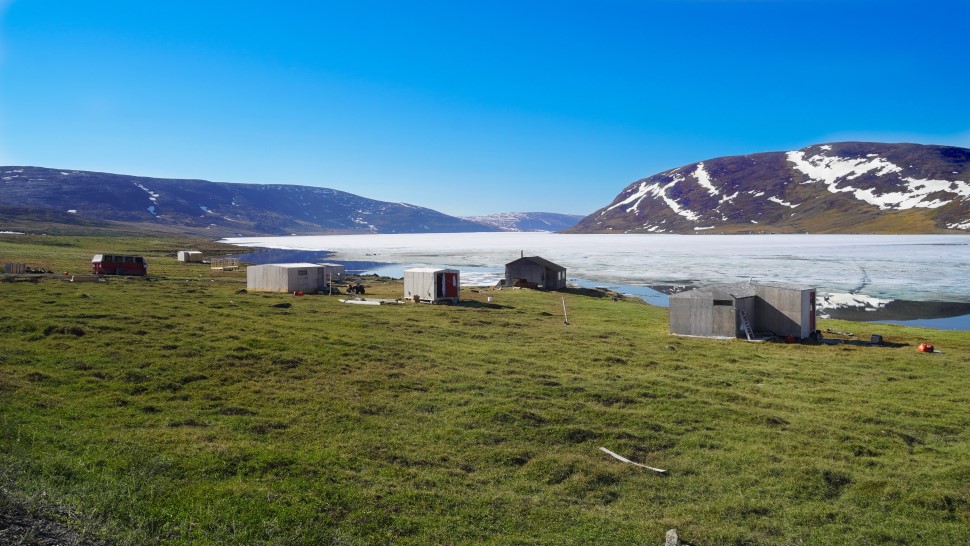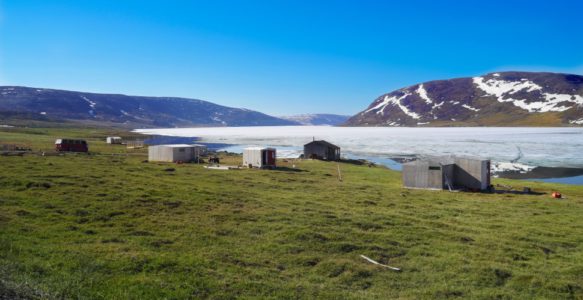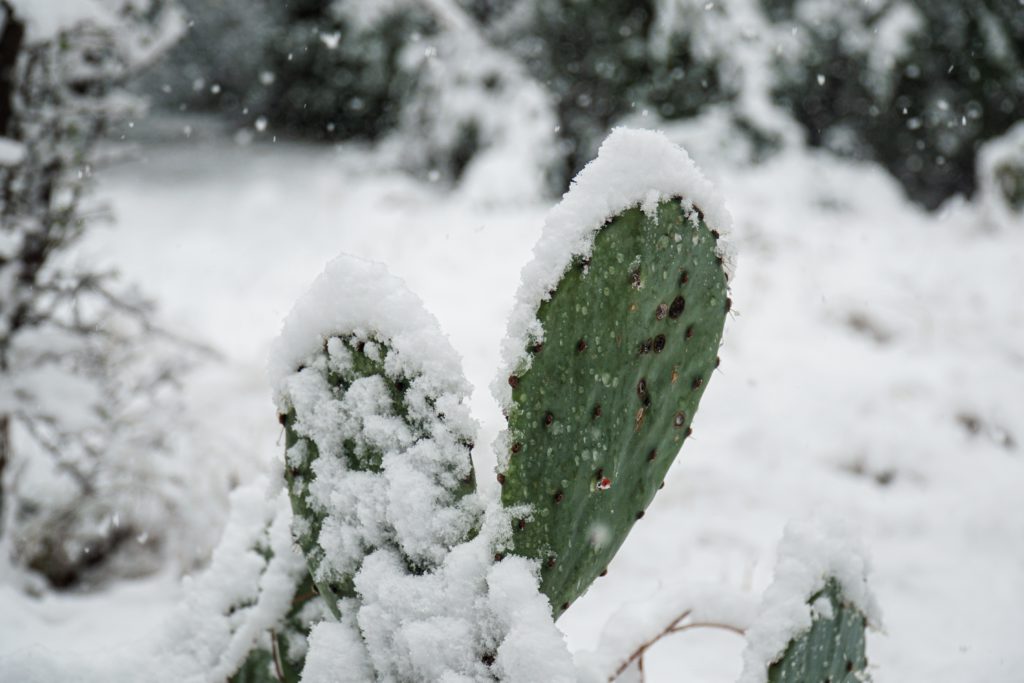Tracking Pacific walrus diet over the course of the last 4,000 years amidst changing sea ice conditions is surprisingly important to understanding our current climate situation. We know that sea ice levels have varied in the past, and we have specimens that contain data about those conditions. So how can that data inform us about the adaptations of walruses to current sea ice level changes? A paper by Casey Clark and colleagues from 2019 reaches the conclusion that variable sea ice in the past likely did not have an effect on the changes in walrus diet. The paper, however, presents a disturbing hypothesis that “changes currently underway in this region are unlike any others that occurred during the study period” (Clark et al. 2019:13). In other words, the change in climate is so rapid and unprecedented that modern walruses may not be able to adapt, especially if ocean acidification associated with higher atmospheric and aqueous CO2 concentrations affects primary producers and results in a bottom-up cascade. In plain English, there will be nothing for the walruses to eat. And if walruses cannot adapt, what does this mean for people?
Using an example from the Atlantic, Laura Martinez-Levasseur and colleagues argue that walruses are essential for tackling food insecurity among the Inuit community in Nunavik, QC, Canada (Martinez-Levasseur et al. 2020). The westernization of the economy in indigenous settlements in the northern regions of Canada has led to an increased consumption of market foods (Huet, Rosol, and Egeland 2012). Market foods are typically imported from the south and lower in nutritional value. Catherine Huet and colleagues identified food insecurity in 62.6 percent of households in Arctic Canada, with adults consuming fewer fruits and vegetables and receiving more energy from high-sugar foods.
Walruses have played an important role in the Inuit culture, with meat making up part of the traditional Inuit diet and hides used for clothing. Martinez-Levasseur and colleagues also note that walruses are low in mercury and high in nutrients (Martinez-Levasseur et al. 2020). Though commercial walrus hunting was banned in the 1930s, the Inuit continue to hunt walruses under an agreement with federal and state governments; however, harvests have decreased in the last decade due to costs associated with hunting (Fisheries and Oceans Canada 2013:12). Huet and colleagues found a statistically significant relationship between having active hunters in a household and that household being food secure (p < 0.05).
If walrus hunting were to increase in order to establish food security among the Inuit, anthropology and archaeology can play an important role in determining baselines for maintaining a sustainable walrus stock. What do we know about walrus hunting in the pre-Inuit Dorset culture, and can we apply those findings to modern walrus hunts?
This very example of establishing baselines for marine resources comes up in a paper by George Hambrecht and colleagues on the utility of using “distributed observing network of the past” (DONOP) sites to inform resource managers. In order to prevent shifting baseline syndrome, in which “communities formulate natural resource management decisions on ideas about primal or pristine natural resource populations that are inaccurate” (Hambrecht et al. 2020:222), resource managers can use zooarchaeology research that includes past ecological conditions to establish more accurate baseline data. Hambrecht and colleagues use the example of fishery management in the North Atlantic, where cod fisheries had been using catch data from the beginning of the 20th century to establish baselines, even though cod populations had been impacted by human exploitation since the early 19th century. Not surprisingly, using incorrect data can create stress on these populations and unexpected results.
To summarize, we know that walruses are important to creating food security in Arctic populations and that we have the ability to create resource management plans based on anthropological and archaeological data. All of this is moot, however, if we cannot protect walruses and the food web that supports them. So, how do social scientists work with ecologists to make sure this type of research is highlighted?
It is helpful to have papers like the study by John Briggs and colleagues on how ecologists and anthropologists working together brings value to both disciplines (Briggs et al. 2006). But the importance of this collaboration is locked away in journals and academic conferences, far from the resource managers and communities that need this information. What we really need is public, interdisciplinary social and natural sciences that work directly with civil society to tackle the issues we currently face. This could be through traditional methods of public outreach, like collaborations with popular science news sites such as Gizmodo, Ars Technica or Wired. It could also be through organic public collaborations, such as working directly with Inuit communities. The problems we face are too dire for us to be locked away in specializations, accumulating knowledge for knowledge’s sake.
References
Briggs, John M., Katherine A. Spielmann, Hoski Schaafsma, Keith W. Kintigh, Melissa Kruse, Kari Morehouse, and Karen Schollmeyer. 2006. “Why Ecology Needs Archaeologists and Archaeology Needs Ecologists.” Frontiers in Ecology and the Environment 4(4):180–88. doi: 10.1890/1540-9295(2006)004[0180:WENAAA]2.0.CO;2.
Clark, Casey T., Lara Horstmann, Anne de Vernal, Anne M. Jensen, and Nicole Misarti. 2019. “Pacific Walrus Diet across 4000 Years of Changing Sea Ice Conditions.” Quaternary Research 1–17. doi: 10.1017/qua.2018.140.
Fisheries and Oceans Canada. 2013. “Proceedings of the Pre-COSEWIC Peer Review Meeting for Atlantic Walrus (Odobenus Rosmarus Rosmarus).”
Hambrecht, George, Cecilia Anderung, Seth Brewington, Andrew Dugmore, Ragnar Edvardsson, Francis Feeley, Kevin Gibbons, Ramona Harrison, Megan Hicks, Rowan Jackson, Guðbjörg Ásta Ólafsdóttir, Marcy Rockman, Konrad Smiarowski, Richard Streeter, Vicki Szabo, and Thomas McGovern. 2020. “Archaeological Sites as Distributed Long-Term Observing Networks of the Past (DONOP).” Quaternary International 549:218–26. doi: 10.1016/j.quaint.2018.04.016.
Huet, Catherine, Renata Rosol, and Grace M. Egeland. 2012. “The Prevalence of Food Insecurity Is High and the Diet Quality Poor in Inuit Communities.” The Journal of Nutrition 142(3):541–47. doi: 10.3945/jn.111.149278.
Martinez-Levasseur, Laura M., M. Simard, C. M. Furgal, G. Burness, P. Bertrand, S. Suppa, E. Avard, and M. Lemire. 2020. “Towards a Better Understanding of the Benefits and Risks of Country Food Consumption Using the Case of Walruses in Nunavik (Northern Quebec, Canada).” Science of The Total Environment 719:137307. doi: 10.1016/j.scitotenv.2020.137307.



